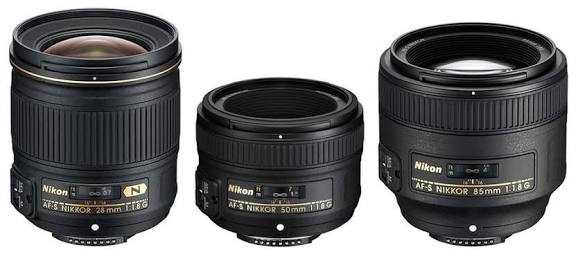PRIME LENS
A prime lens is one is just that has one focal length only ( IN CONTRAST TO A ZOOM LENS THAT COVERS WIDE RANGE OF LENGTH). Prime lens came in a wide range of focal length from wide angles through to the very longest of tele photo lenses USED BY MANY SPORTS PHOTOGRAPHERS AND PAPRAAZI.
While zoom lens are many popular and come as a standard kit lens with most DSLR’S sold. Prime lens remain the favorite of many .THERE’S A LOT TO LIKE ABOUT PRIME LENSES and most serious photographers will own one or at least two
Switch to a high quality prime lens ,distortion and vignetting should be much less noticeable, Sharpness is also excellent so you can make the most of the high resolution fitted to current digital camera
ANOTHER BIG BONUS OF USING PRIME LENSES, they’re USUALLY FASTER. This mean they have large maximum aperture which enables quicker shutter speeds. Another big advantage is that you can get a much tighter depth of field, enabling you to isolate the main point of interest in a shot by bluring the background
SOME AMAZING THING ABOUT USING PRIME LENSES
They make you work harder
With the zoom lens it is easy to get lazy to zoom in and out but in PRIME LENSES MAKE YOU THINK ABOUT THE SHOT MORE, FORCING YOU TO BE MORE CREATIVE
WEIGHT
With few moving parts , prime lenses are more compact and lighter perfect if you want to travel light. They said, some expensive prime with lots of quality glass element that’s matched by a tank builds quality can be heavy beasts.
BIGGER IS BETTER
The fastest lens have aperture of f/1.4 or f/1.8 enable higher shutter speed and reduced depth of field. This make more use full than f 2/.8 lenses.
PLAY WITH LIGHT
Invest in a neutral density filter if you want to shoot with large apertures in a sunny condition. This will force the shutter speed extended allowing you to shoot wide open at f/1.4 or f/1.8 and avoid overexposing the shots.
CHOOSE YOUR FOCAL LENGTH
Before diving in and getting your prime lens , do your research. You may think you need 24 mm prime but a quick look at the focal length you use in a light room might reveal that in actual fact you tend to shoot at 28 mm 38 mm.
CLOSE QUARTERS
A macro facility at versatility but you will have to be very close to the object you are shooting with a 50 mm lens any 35 mm is almost unusable.
OPEN WIDE
When shooting with a maximum aperture with fast f/1.4 outline Sharpness can be a bit lacking, in some instances particularly with the edges of the frame but this varies from lens to Lens
.
SITTING PRETTY
A 50 mm lens or an AP-C format body is a great combination of portraiture. A maximum aperture of f/1.4 or f/1.8 enable you to blur the background much more effectively then you did be able to be with a budget 18-55 mm zoom lens .
INVESTMENT BANKING
If your budget can stretch to it. It’s good to buy a professional optic such as full frame compatible lens even if you use an APS-C format DSLR’S . It future proof you if you ever decide to trade up to a full frame camera later on.
BETTER IMAGE QUALITY
Further to the last. You will find a other mage quality benefit with the prime lens. There’s generally less distortion and less chromatic aberration because, again less manufacture only need to control for the 1 focal length. So you are getting some really nice quality from this handy little Prime lenses.
There is really a best in photography when it comes do either technique and equipment and those considering to purchase a prime lens will want to think seriously about their own needs and circumstances.
CHEERS
